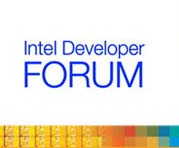Intel ditch HT technology
 Intel have just stated that HT is not going to feature in their next architecture. This is a bit of a shock since they spent months messaging us that HT would be the most important move in microprocessor development, Intel have removed it (read - not included it) in their next generation processor.
Intel have just stated that HT is not going to feature in their next architecture. This is a bit of a shock since they spent months messaging us that HT would be the most important move in microprocessor development, Intel have removed it (read - not included it) in their next generation processor.
Whilst this does not mean it won't ever be included, it is clear that there are currently no plans to include it. The reasoning for this is that it was a bridging technology to bring multi and dual core to us all.
HEXUS remembers that at the time Intel were very keen to inform us that there was no cost associated with HT and it was 'free' performance. Surely it should be on all platforms still?














